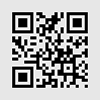
Snow Engine Manual
3
rev. 01/04/16
Engine Safety
IMPORTANT SAFETY INSTRUCTIONS
Accidents occur less frequently when instructions are followed, the operator is safety conscious and the engine is properly maintained.
Some of the most common hazards are discussed below, along with the best way to protect yourself and others.
• This engine is for COLD WEATHER USE ONLY.
• FUEL STABILIZER IS RECOMMENDED FOR LONG TERM STORAGE.
Owner and Operator Responsibilities
Owners and operators should perform the following suggestions:
• Carefully read the owners manual.
• Follow the instructions in this manual carefully.
• Familiarize yourself with all controls and know how to stop the engine quickly in case of an emergency.
• Keep children away from the engine and do not let them operate it. Keep children and pets away from the area of operation.
• Operate this engine in well-ventilated areas. NEVER run engine indoors.
Refueling the Engine
Gasoline is extremely flammable, and gasoline vapor can explode. When refueling the engine, take the following precautions.
• Perform when the engine is cool.
• Refuel outdoors in well-ventilated areas.
• The engine must not be running.
• Make sure the engine is grounded to prevent static electrical spark.
• Do not smoke or use cell phones when refueling.
• Keep away from flames or sparks.
• If spillage occurs, be sure all areas are dry and vapor has dissipated prior to starting the engine.
Exhaust
CARBON MONOXIDE HAZARD:
Engine exhaust is dangerous because of intense heat and emission of carbon monoxide, a
poisonous gas. Avoid inhalation of exhaust gas. Always run the engine in a well-ventilated area.
Never run the engine indoors.
Heat Shield
• The snow engine is equipped with a heat shield that is designed to allow the engine to operate
in cold conditions (see starting procedure for correct choke placement when starting the engine).
The heat shield and components inside are hot. Make sure the engine has sufficient time to
cool before touching the shield or performing maintenance work inside the shield.
See Maintenance Section for further information.
• To prevent fire hazards and for adequate ventilation, keep the engine at least 3 feet (1 meter)
away from building walls and other equipment during operation. Do not place flammable
objects close to the engine.
Other Equipment
Review the instructions provided with the equipment powered by this engine for any additional safety precautions that should be
observed in conjunction with engine startup, shutdown, operation, or protective safety gear that may be needed to operate the
equipment.
WARNING
WARNING
Do not touch hot sections of engine (see figure above).
The hot sections of the engine can cause severe burns.
DANGER
Heat
Shields
